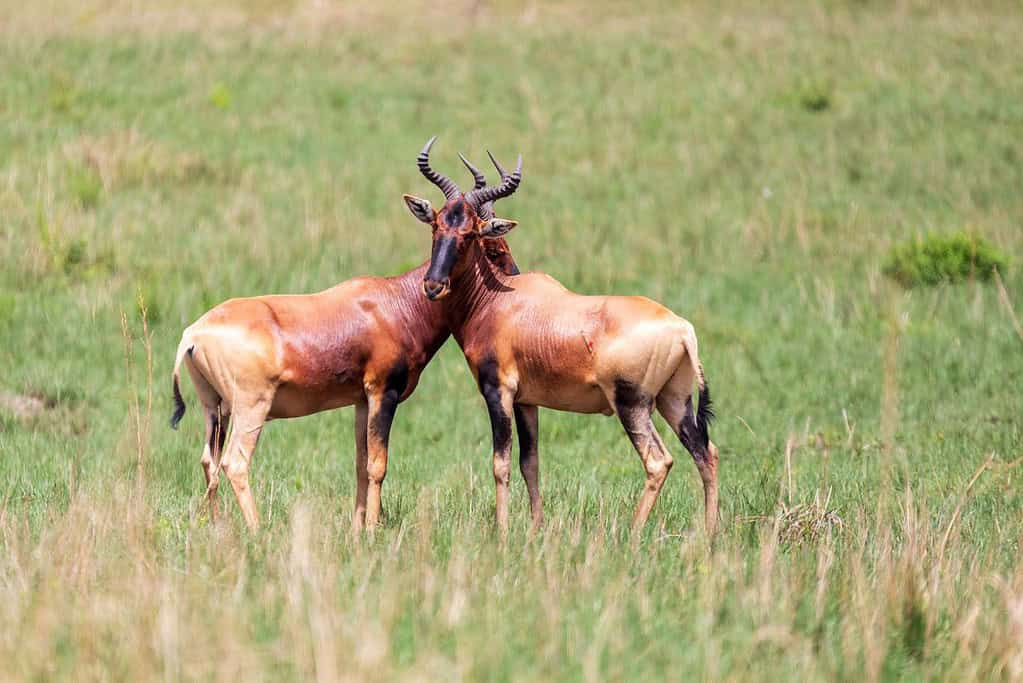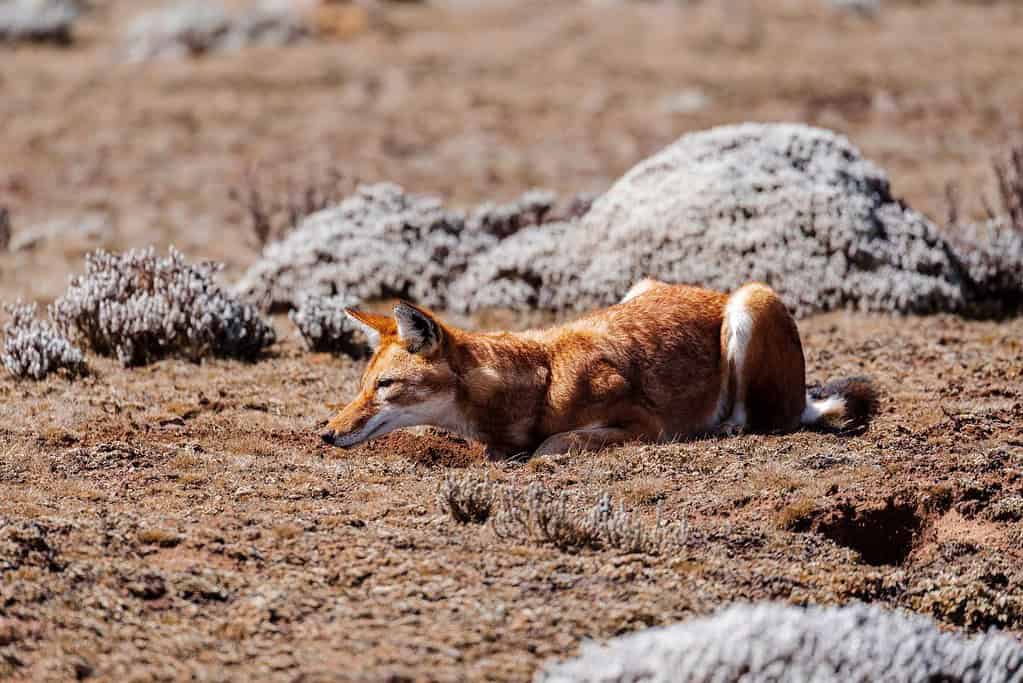Ethiopia is a land of extraordinary landscapes and remarkable wildlife. From the rugged peaks of the Simien Mountains to the lush valleys of the Bale Mountains, Ethiopia’s highlands offer a unique habitat for many rare and endemic species. This guide explores Ethiopia’s fascinating wildlife, focusing on two of its most iconic species: the Ethiopian wolf and the Gelada baboon. We’ll take you through the best places to spot these incredible animals and provide tips for a successful wildlife adventure.
Table of Contents
1. An Introduction to Ethiopia’s Unique Wildlife
Ethiopia is renowned for its biodiversity, boasting numerous endemic species found nowhere else on Earth. The country’s diverse ecosystems, ranging from arid deserts to lush forests, create ideal conditions for a wide variety of wildlife. Among the most captivating creatures are the Ethiopian wolf and the Gelada baboon, both of which have adapted to the unique conditions of the Ethiopian highlands.
Ethiopian Wolf: The World’s Rarest Canid
The Ethiopian wolf is the world’s rarest canid and is found only in Ethiopia’s high-altitude plateaus. With its slender build, reddish-brown coat, and distinct white markings, the Ethiopian wolf is often mistaken for a fox. However, its elongated legs and narrow snout set it apart. These wolves are highly specialized hunters, primarily preying on the abundant rodent populations in their habitats.
Gelada Baboon: The Grass-Eating Primates
The Gelada baboon, also known as the “bleeding-heart monkey” due to the red patch of skin on its chest, is the only primate species that primarily feeds on grass. Found exclusively in the Ethiopian Highlands, Geladas are known for their complex social structures and vocalizations. Unlike other baboon species, Geladas spend most of their time foraging on the ground in large groups, which can number in the hundreds.

2. Best Locations to Spot Ethiopian Wildlife
Ethiopia’s highlands provide some of the best wildlife viewing opportunities in the country. Here are the top locations to spot the Ethiopian wolf and Gelada baboon:
Simien Mountains National Park
Located in northern Ethiopia, the Simien Mountains National Park is a UNESCO World Heritage site known for its dramatic landscapes and rich biodiversity. The park’s rugged cliffs, deep valleys, and towering peaks create a stunning backdrop for wildlife viewing. The Simien Mountains are one of the few places in the world where you can see the Gelada baboon in its natural habitat.
- Best Time to Visit: The dry season, from October to March, is the best time for wildlife viewing in the Simien Mountains. During this period, the weather is cooler, and the animals are more active.
- Where to Spot Gelada Baboons: Geladas are most commonly found on the grassy slopes and plateaus of the Simien Mountains. They are often seen grazing in large groups near the park’s main trekking routes, making them relatively easy to spot.
- Other Wildlife: Besides Geladas, the Simien Mountains are home to other unique species such as the Walia ibex, an endangered wild goat found only in Ethiopia, and the Ethiopian fox.
Bale Mountains National Park
The Bale Mountains National Park, located in southeastern Ethiopia, is another prime location for wildlife enthusiasts. This park encompasses a range of habitats, from afro-alpine moorlands to lush cloud forests, making it a haven for various wildlife species. The Bale Mountains are the best place in the world to see the Ethiopian wolf in the wild.
- Best Time to Visit: The dry season, from November to February, offers the best conditions for wildlife viewing in the Bale Mountains. The clear skies and cool temperatures make it easier to spot animals.
- Where to Spot Ethiopian Wolves: The Ethiopian wolves are most commonly found in the Sanetti Plateau, a high-altitude area characterized by vast grasslands and giant lobelia plants. Early morning and late afternoon are the best times to see these elusive predators hunting for rodents.
- Other Wildlife: The Bale Mountains are also home to other unique species such as the Mountain nyala, Menelik’s bushbuck, and the giant mole-rat, a favorite prey of the Ethiopian wolf.
3. Tips for a Successful Wildlife Adventure in Ethiopia
To make the most of your wildlife adventure in Ethiopia, it’s essential to plan and be prepared. Here are some tips to help you have a successful and enjoyable experience:

Hire a Local Guide
Hiring a local guide is one of the best ways to enhance your wildlife viewing experience in Ethiopia. Knowledgeable guides are familiar with the habits and habitats of the animals, increasing your chances of spotting them. They can also provide valuable insights into the local culture and history.
Pack the Right Gear
When embarking on a wildlife adventure in Ethiopia, it’s crucial to pack the right gear. Here are some essentials to consider:
- Binoculars: A good pair of binoculars is essential for spotting wildlife from a distance, especially for viewing the elusive Ethiopian wolf.
- Camera: A camera with a zoom lens is ideal for capturing close-up shots of the animals without disturbing them.
- Clothing: Layered clothing is recommended, as temperatures can vary significantly between day and night. A waterproof jacket is also essential, as weather conditions can change rapidly in the highlands.
- Footwear: Sturdy hiking boots are necessary for trekking through the rugged terrain of the highlands.

Respect Wildlife and Their Habitat
While it’s exciting to see Ethiopia’s unique wildlife, it’s important to remember that these animals are wild and should be treated with respect. Keep a safe distance from the animals and avoid making loud noises or sudden movements that could startle them. Always follow the guidelines set by park authorities and respect the natural environment.
Be Patient and Persistent
Wildlife viewing requires patience and persistence. Animals are unpredictable, and sightings are never guaranteed. Spend time observing the landscape and listening for any signs of wildlife. Early mornings and late afternoons are usually the best times for wildlife activity, so plan your excursions accordingly.
4. Conservation Efforts and Challenges
Despite its rich biodiversity, Ethiopia faces significant challenges in conserving its unique wildlife. Habitat loss, human-wildlife conflict, and climate change are some of the main threats to the country’s wildlife populations. However, various conservation organizations and government initiatives are working to protect these endangered species and their habitats.

Ethiopian Wolf Conservation
The Ethiopian wolf is classified as endangered, with fewer than 500 individuals remaining in the wild. Conservation efforts focus on protecting their habitat, reducing disease transmission from domestic dogs, and raising awareness about the importance of this unique species. Organizations such as the Ethiopian Wolf Conservation Programme (EWCP) play a vital role in safeguarding the future of these rare canids.
Gelada Baboon Conservation
Gelada baboons are not currently endangered, but they face threats from habitat loss and human encroachment. Conservation efforts aim to protect their natural habitat and promote sustainable land-use practices in the Ethiopian Highlands.
5. Conclusion: Embrace the Adventure
A wildlife adventure in Ethiopia offers a rare opportunity to witness some of the world’s most unique and fascinating species in their natural habitat. From the elusive Ethiopian wolf to the charismatic Gelada baboon, the Ethiopian highlands are a treasure trove of wildlife waiting to be discovered. By planning your trip carefully, respecting the environment, and supporting conservation efforts, you can enjoy a truly unforgettable experience in this incredible country.
Ethiopia’s highlands are calling. Are you ready to answer? Pack your bags, prepare your gear, and embark on a journey to discover the wild heart of Ethiopia.
Read the Ethiopia article here.
